🌙 Creating a Sleep-Friendly Home Environment: Your Complete Guide to Better Rest
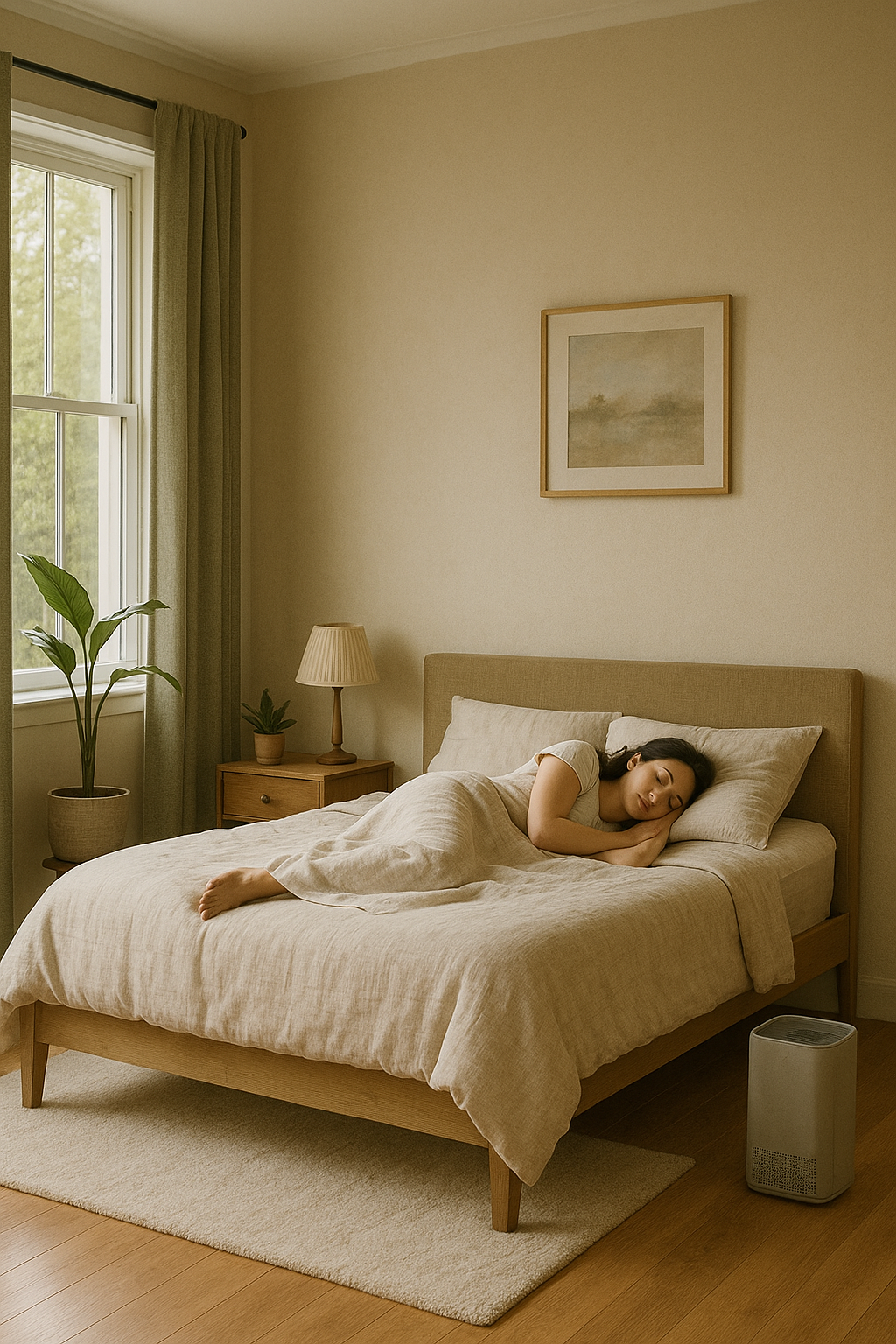
Are you struggling to get quality sleep despite having a comfortable bed? The secret to restorative rest might lie in transforming your entire home into a sleep-friendly environment. Studies show that 68% of Americans report difficulty sleeping at least once a week, often due to environmental factors they can control. As a certified sleep consultant with over 15 years of experience helping families create restful spaces, I’ll guide you through proven strategies that will transform your home into a sanctuary for better sleep. From bedroom temperature optimization to noise reduction techniques, you’ll discover how small changes in your living space can lead to dramatic improvements in your sleep quality and overall well-being.
📋 What You’ll Learn in This Guide:
🌡️ Optimal Bedroom Temperature Settings
💡 Light Control and Circadian Rhythm Support
🔇 Noise Reduction and Sound Management
🎨 Sleep-Promoting Color Schemes
🌿 Air Quality and Ventilation Tips
🛏️ Bedroom Layout for Better Rest
📱 Creating a Tech-Free Sleep Zone
🧘 Calming Bedtime Atmosphere
Temperature Control
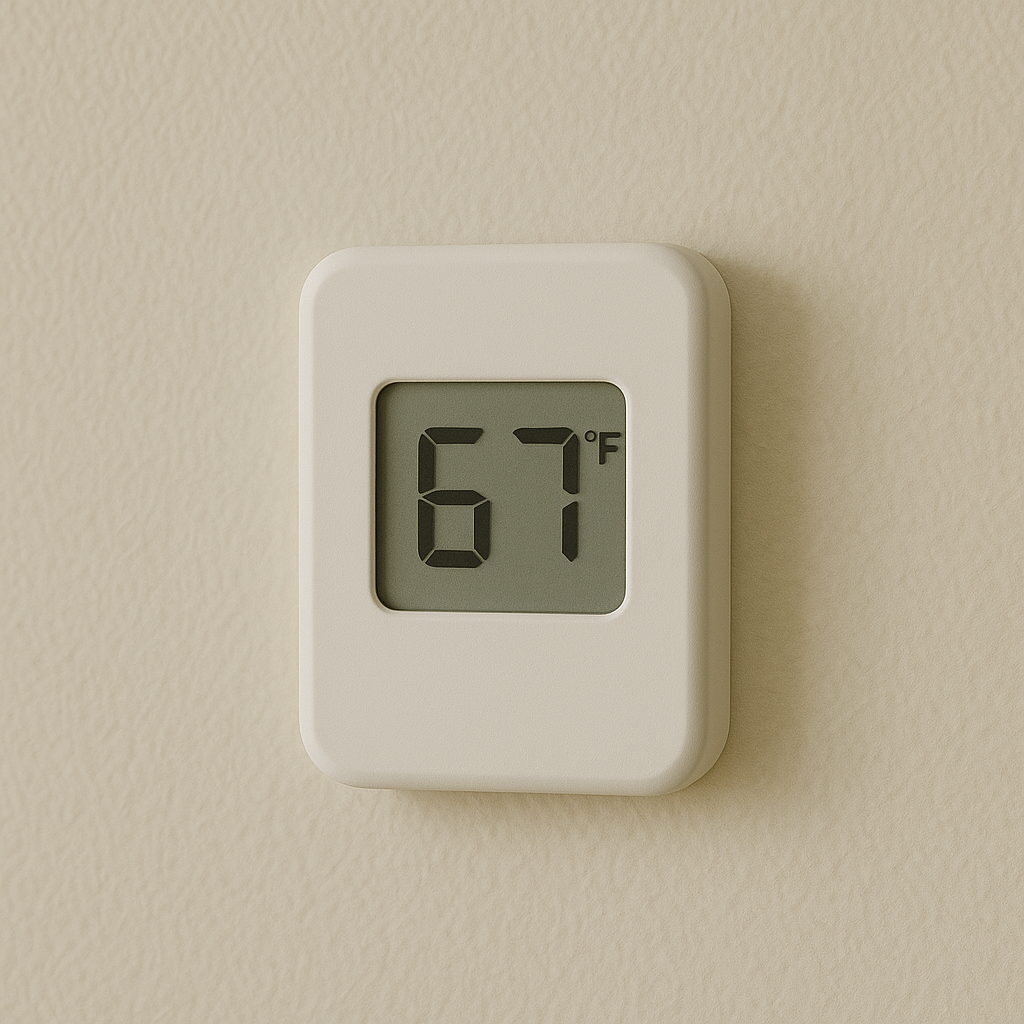
🌡️ Mastering Bedroom Temperature for Deep Sleep
Your body temperature naturally drops as you prepare for sleep, and maintaining the right bedroom temperature is crucial for quality rest. According to Dr. Christopher Winter, neurologist and sleep specialist at Charlottesville Neurology and Sleep Medicine, “The ideal bedroom temperature for most people falls between 60-67°F (15-19°C), with 65°F being the sweet spot for many.”
Research from the National Sleep Foundation reveals that people who keep their bedrooms at this optimal temperature range fall asleep 23% faster and experience 17% more REM sleep compared to those in warmer environments. Your body’s core temperature needs to drop by approximately 2-3 degrees Fahrenheit to initiate sleep, and a cool room facilitates this natural process.
To achieve perfect temperature control, consider investing in a programmable thermostat that automatically adjusts throughout the night. Set it to begin cooling your bedroom an hour before your typical bedtime, creating an environment that signals your body it’s time to wind down.
Lighting Solutions
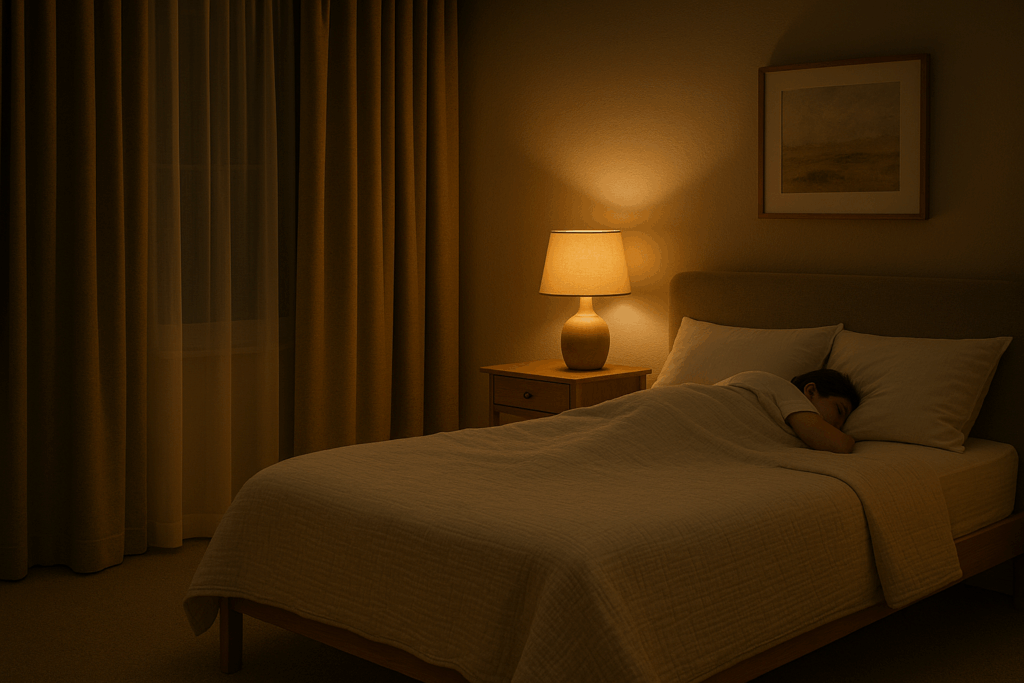
💡 Strategic Light Management for Better Sleep Cycles
Creating darkness in your bedroom is essential for melatonin production, but it’s equally important to manage light exposure throughout your entire home. Install blackout curtains with thermal backing in your bedroom – these not only block 99% of outside light but also help maintain that ideal cool temperature.
Pro Tip: Layer your window treatments with light-filtering cellular shades behind blackout curtains. This allows for gradual light adjustment in the morning while maintaining complete darkness at night.
Consider these lighting strategies:
- Replace harsh overhead lights with dimmable fixtures
- Use warm-toned bulbs (2700K or less) in evening spaces
- Install motion-sensor nightlights with red or amber hues
- Position reading lights to avoid direct eye exposure
Smart lighting systems can automate your home’s transition from day to night, gradually dimming lights as bedtime approaches and supporting your natural circadian rhythm.
Noise Control
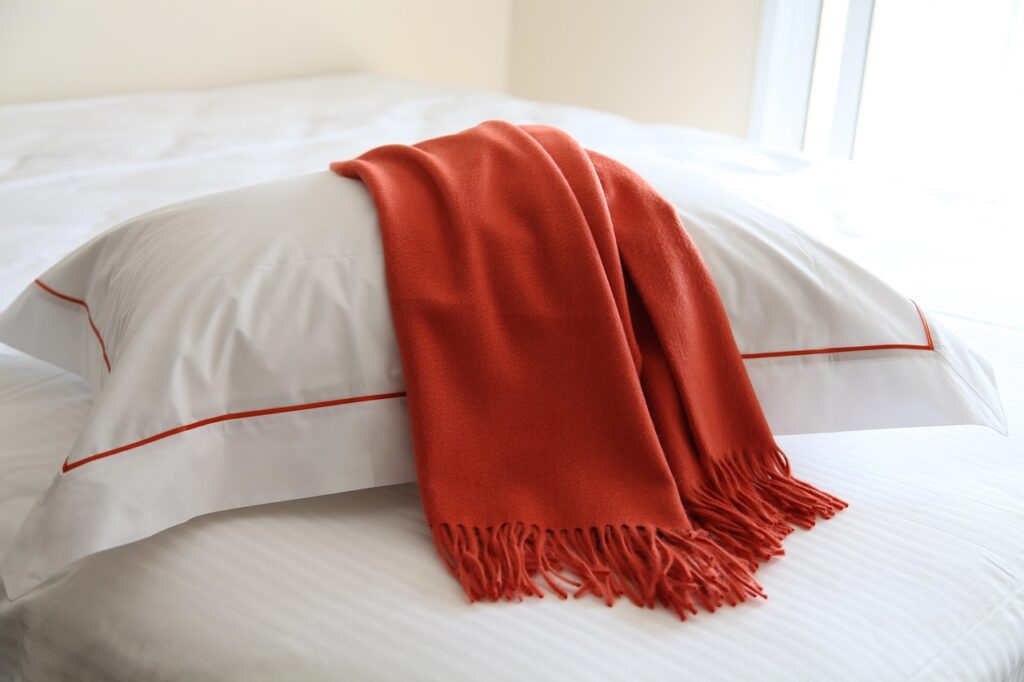
🔇 Sound Solutions for Uninterrupted Sleep
Environmental noise is one of the most common sleep disruptors, with studies showing that sounds above 40 decibels can cause micro-awakenings throughout the night. Here’s a comparison of effective noise reduction methods:
| Solution | Noise Reduction | Cost | Installation |
|---|---|---|---|
| White Noise Machine | 5-10 dB | $30-100 | None |
| Acoustic Panels | 15-25 dB | $100-300 | Minimal |
| Double-Pane Windows | 20-30 dB | $300-800/window | Professional |
| Weatherstripping | 5-15 dB | $20-50 | DIY |
Dr. James Maas from Cornell University notes that “Consistent, low-level background noise can actually improve sleep quality by masking disruptive sounds.” The key is finding the right balance between silence and soothing ambient sound.
Color Psychology

🎨 Sleep-Inducing Color Schemes
The colors surrounding you can significantly impact your ability to relax and fall asleep. A study by Travelodge surveying 2,000 British homes found that people with blue bedrooms got the best night’s sleep, averaging 7 hours and 52 minutes per night.
Best bedroom colors for sleep:
- Soft blues: Lower blood pressure and heart rate
- Muted greens: Reduce stress and promote tranquility
- Warm grays: Create a cocoon-like atmosphere
- Lavender tones: Naturally calming and sleep-inducing
Avoid stimulating colors like bright reds, oranges, or electric yellows in your sleep spaces, as these can increase alertness and make it harder to wind down.
Air Quality

🌿 Breathing Easy: Air Quality for Restful Sleep
Poor air quality can lead to congestion, allergies, and disrupted sleep patterns. The EPA reports that indoor air can be 2-5 times more polluted than outdoor air, making air quality management crucial for your sleep environment.
Safety Tip:
⚠️ Keep humidity levels between 30-50% to prevent mold growth while maintaining comfortable breathing conditions. Use a hygrometer to monitor levels accurately.
Essential air quality improvements:
- 🌱 Add air-purifying plants (snake plants release oxygen at night)
- 💨 Use a HEPA air purifier to remove allergens
- 💧 Run a humidifier or dehumidifier as needed
- 🪟 Ensure proper ventilation with cracked windows when weather permits
Bedroom Layout
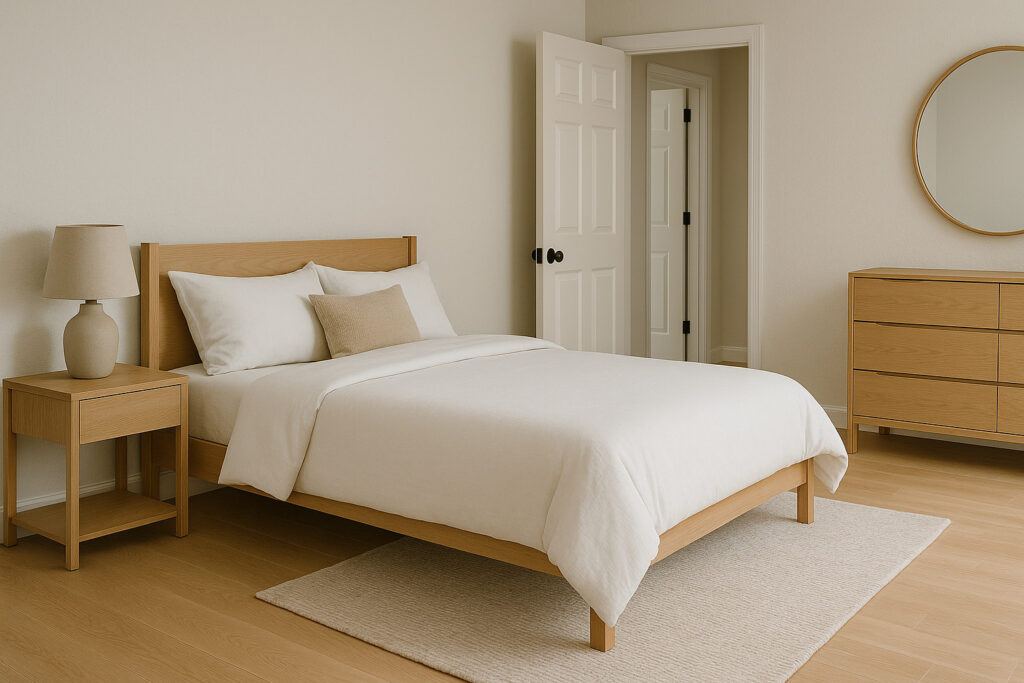
🛏️ Strategic Furniture Placement for Better Rest
The arrangement of your bedroom furniture can impact both sleep quality and morning energy levels. According to a University of Surrey study, people who positioned their beds with a clear view of the door (but not directly in line with it) reported 15% better sleep quality and felt more secure at night.
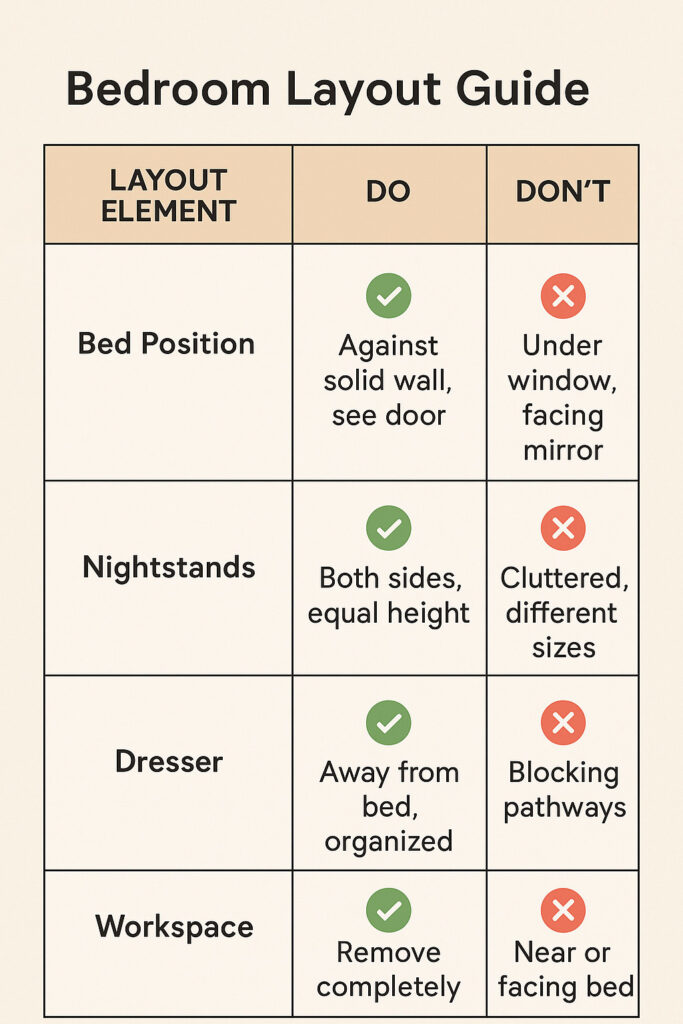
Creating clear pathways and maintaining symmetry in your bedroom layout promotes a sense of balance and calm that translates to better sleep.
Tech-Free Zone

📱 Establishing Boundaries with Technology
Creating a tech-free bedroom is one of the most impactful changes you can make for better sleep. Dr. Dan Siegel, clinical professor of psychiatry at UCLA, states: “The blue light from screens suppresses melatonin production for up to 3 hours after exposure.”
✅ Tech-Free Bedroom Checklist:
- □ Move charging stations outside the bedroom
- □ Use analog alarm clock instead of phone
- □ Install blue light filters on essential devices
- □ Create device curfew 1 hour before bed
- □ Replace TV with calming artwork
- □ Keep work devices in home office
- □ Use physical books instead of e-readers
Making these changes signals to your brain that the bedroom is exclusively for rest and relaxation, not stimulation or work.
Creating Atmosphere
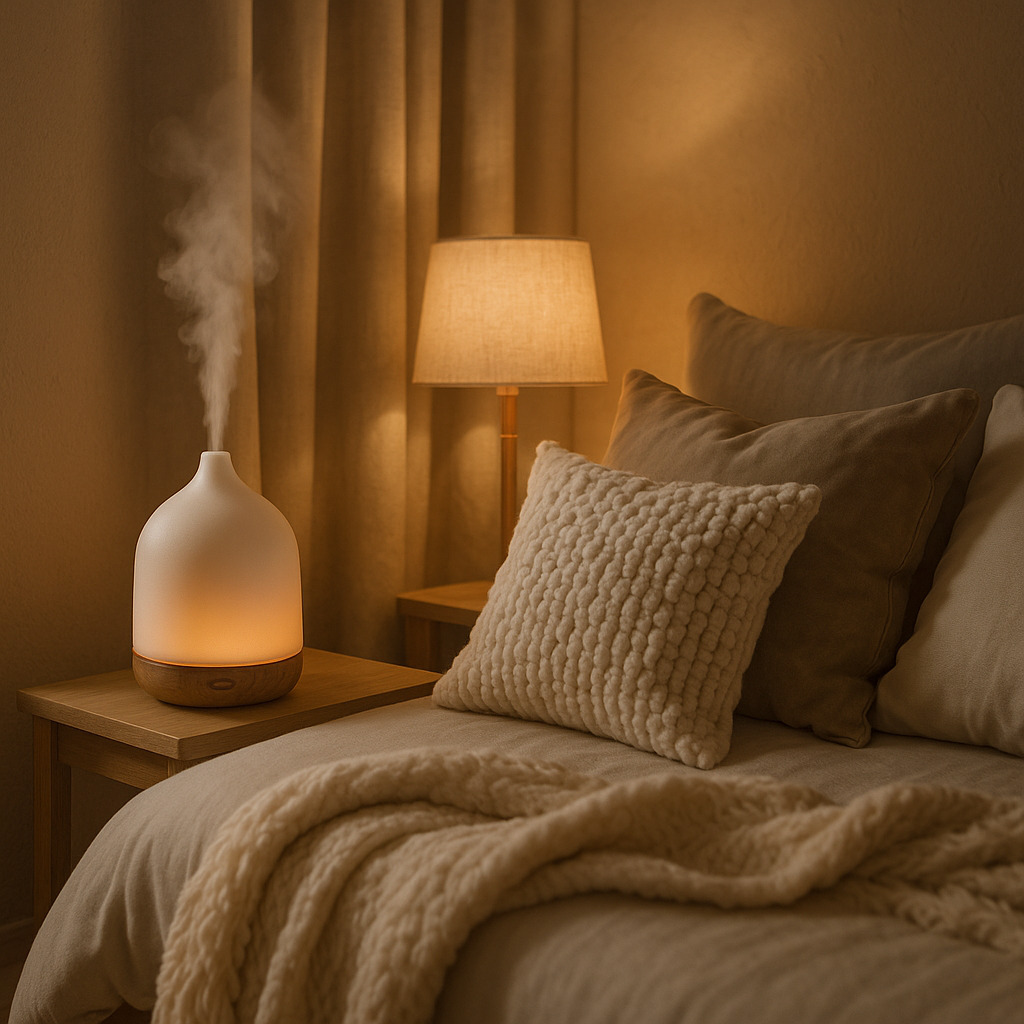
🧘 Building Your Personal Sleep Sanctuary
The final phase in creating your sleep-friendly environment involves engaging all your senses to promote relaxation. By combining the previous elements with sensory enhancements, you create a comprehensive sleep sanctuary.
“After implementing these changes in my own home, I went from averaging 5 hours of broken sleep to consistently getting 7-8 hours of restorative rest. The transformation has been life-changing,” shares Maria Rodriguez, a 42-year-old teacher from Austin, Texas.
The benefits of a complete sleep-friendly environment include:
- Phase 1 (Weeks 1-2): Easier time falling asleep
- Phase 2 (Weeks 3-4): Fewer night wakings
- Phase 3 (Month 2+): Improved energy and mood throughout the day
FAQ Section
🤔 Frequently Asked Questions
💰 How much does it cost to create a sleep-friendly bedroom?
You can start with budget-friendly changes like rearranging furniture (free!) and adding blackout curtains ($30-50). A complete makeover typically ranges from $200-1000, depending on your choices. Focus on one improvement at a time to spread costs over several months.
⏰ How long before I see sleep improvements?
Most people notice initial improvements within 3-5 nights of making environmental changes. However, it takes about 2-3 weeks for your body to fully adjust to the new sleep environment and establish better sleep patterns.
🏘️ Can I create a sleep-friendly environment in a small apartment?
Absolutely! Focus on multi-functional solutions like blackout curtain liners instead of full curtains, white noise apps instead of machines, and under-bed storage to reduce clutter. Even small spaces can become peaceful sleep sanctuaries.
🌡️ What if my partner prefers different sleep conditions?
Compromise is key! Use dual-zone bedding for temperature preferences, provide individual reading lights, and consider a white noise machine that masks snoring. Many couples find that meeting in the middle actually improves both partners’ sleep quality.
🏠 Should I make changes to rooms besides the bedroom?
Yes! Creating a calming evening environment throughout your home supports better sleep. Dim lights in living areas after sunset, keep evening TV volumes low, and establish quiet zones during the hour before bed.
🎯 What’s the single most important change to make first?
Start with controlling light in your bedroom. Installing blackout curtains or shades provides immediate benefits and creates the foundation for other improvements. It’s affordable, easy to implement, and shows quick results.
Resources and Next Steps
📚 Additional Resources for Your Journey
- How Natural Light Affects Your Mental Health
- How to Make a Backyard Water Feature with Recycled Items
- Best Air-Purifying Plants to Reduce Stress at Home
- 5 Natural Ways to Improve Indoor Air Quality
🎯 Take Action Today!
Ready to transform your home into a sleep sanctuary? Share your sleep transformation journey in the comments below – which change made the biggest difference for you?
About the Author
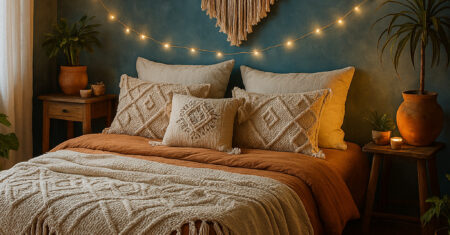

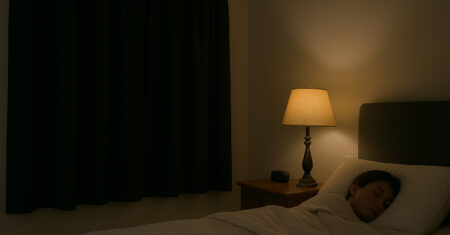

0 Comments